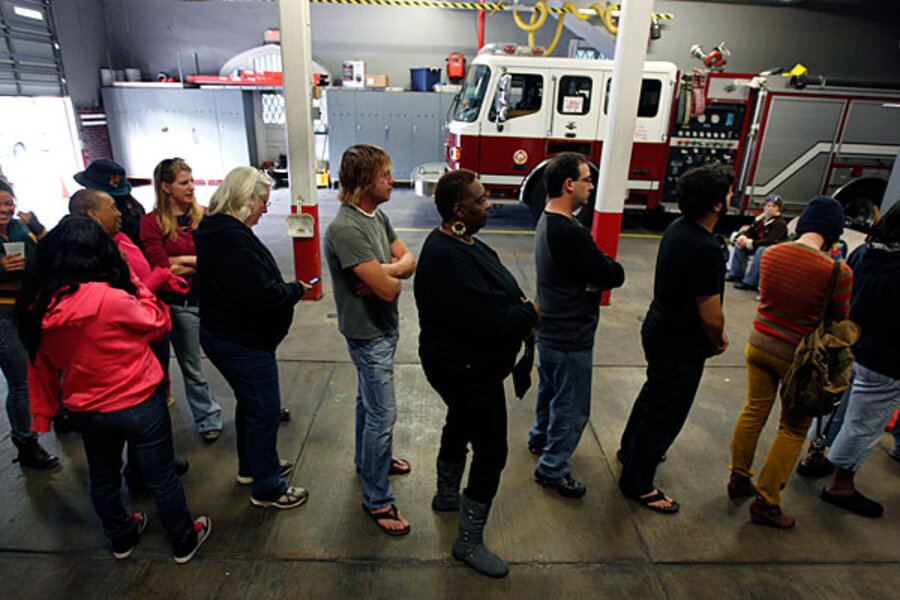Paul Ryan blames loss on surge in 'urban areas.' Is that right?
Loading...
Did the Romney/Ryan ticket lose because of turnout among urban voters? That’s what GOP VP nominee Rep. Paul Ryan implied Tuesday during an interview with a Wisconsin television station.
Representative Ryan said that he and presidential nominee partner Mitt Romney entered election night full of confidence, since the poll numbers they were looking at showed they had “a pretty good chance of winning.”
Then electoral numbers came in running the other direction.
“When we saw the turnout that was occurring in urban areas that [was] unprecedented, it did come as a bit of a shock. So those are the toughest losses to have – the ones that catch you by surprise,” Ryan told WISN in Milwaukee, a CNN affiliate station.
Ryan was taking some heat in the blogosphere Tuesday for the “urban areas” part of the above comment. Some saw it as a coded reference to “blacks.” We won’t bother to quote this discussion – if you want to see it, just search “Paul Ryan” in Twitter and read the vitriol that appears.
But we’re surprised that Ryan says he was surprised by the urban turnout. After all, most of the battleground states ended up voting pretty much as the average of pre-election polls indicated they would. That’s how New York Times polling analyst Nate Silver ended up calling the results in all 50 states. With predictions that were pretty darn public at the time.
Maybe the GOP campaign’s internal polling showed something different, and maybe the candidates believed it. But you think they’d at least have taken a glance at something outside their own bubble.
Obviously, the minority vote went heavily for President Obama. That’s a big reason he won. But this was a fairly predictable element. Plus, though final numbers aren’t really in yet, it doesn’t appear that there were more minority voters overall in 2012 than you’d have expected from a straight demographic prediction.
With the exception of 1992, when Ross Perot’s third party candidacy reshaped the electorate a bit, the white share of the vote has simply been on a steady decline. This is due to the pattern of the population, not urban turnout numbers, writes Matthew Iglesias on Slate’s Moneybox blog.
“There’s no discernable ‘Obama surge’ of minority voting here at all,” according to Mr. Iglesias.
It’s true that some battleground states saw a surge in overall turnout, which might have been powered by urban-area minorities. According to ballot counts as of Nov. 12 compiled by the aforementioned Nate Silver, turnout in Nevada was up 4.5 percent, for instance, when compared with 2008.
But Nevada has long been a fast-growing state, albeit one battered by the decline of the housing economy. And North Carolina, a state Romney won, also showed a turnout increase, of 3.6 percent.
Meanwhile, overall turnout in Pennsylvania and Ohio appears to have declined, according to preliminary figures compiled by Silver. Yet Ryan singled out Ohio as a state where he was especially “shocked” by the results.
Maybe the Romney campaign thought urban turnout in Ohio would plunge sharply, and it didn’t. But all indications are that what really hurt the GOP in the Buckeye State was Romney’s inability to explain his position on the auto bailout in a way that appealed to Ohio's white working class voters.








